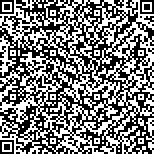王甜梦,曾泓辑,李彩霞,等.脑卒中后吞咽障碍患者吸入性肺炎的影响因素分析及预测模型构建[J].中华物理医学与康复杂志,2024,46(7):618-623
扫码阅读全文

|
| 脑卒中后吞咽障碍患者吸入性肺炎的影响因素分析及预测模型构建 |
|
| |
| DOI:10.3760/cma.j.issn.0254-1424.2024.07.007 |
| 中文关键词: 脑卒中 吞咽障碍 吸入性肺炎 影响因素 预测模型 |
| 英文关键词: Stroke Dysphagia Aspiration pneumonia Risk factors Prediction models |
| 基金项目: |
|
| 摘要点击次数: 2992 |
| 全文下载次数: 3558 |
| 中文摘要: |
| 目的 分析脑卒中后吞咽障碍患者发生吸入性肺炎(AP)的影响因素并构建预测模型。 方法 采用回顾性调查方法,共纳入符合标准的脑卒中后吞咽障碍患者148例,根据住院期间是否发生AP将其分为AP组和非AP组,收集入选患者的一般人口学信息、临床资料等进行单因素分析和多因素Logistic回归分析,并构建列线图模型,同时采用受试者工作特征(ROC)曲线分析各相关因素及列线图模型对AP的预测价值。 结果 AP组共有患者46例,非AP组共有患者102例,AP发生率为31.08%;通过多因素Logistic回归分析发现,年龄、Barthel指数评分、洼田饮水试验评级、营养支持方式、中性粒细胞/淋巴细胞比值(NLR)是脑卒中后吞咽障碍患者发生AP的重要影响因素(P<0.05);通过分析ROC曲线发现,年龄、洼田饮水试验评级、营养支持方式、NLR、Barthel指数评分及列线图模型预测AP的曲线下面积(AUC)分别为0.598、0.651、0.676、0.723、0.775、0.902,上述指标预测AP的灵敏度及特异度分别为91.30%和31.40%、97.80%和32.40%、78.30%和56.90%、67.40%和71.60%、82.60%和61.80%、84.80%和80.40%。 结论 年龄、洼田饮水试验评级、营养支持方式、NLR、Barthel指数评分均是影响脑卒中后吞咽障碍患者发生AP的重要因素,采用列线图模型预测AP的能力显著优于上述各因素单独预测。 |
| 英文摘要: |
| Objective To analyze the risk factors for aspiration pneumonia (AP) among stroke survivors with dysphagia and construct a prediction model. Methods The records of one hundred and forty-eight stroke survivors with dysphagia admitted since 2021 were retrospectively analyzed. They were divided into an AP group (n=46) and a non-AP group (n=102). Univariate and multivariate logistic regressions were evaluated seeking independent risk factors for AP. the receiver-operating characteristic (ROC) curves were used to analyze predictive power. Results The incidence of AP was 31%. Multivariate logistic regression analysis showed that age, Barthel index, Kubota′s water drinking test grading, nutritional support methods and the neutrophil/lymphocyte ratio (NLR) could be useful independent predictors of AP. The areas under the ROC curves suggested that Kubota grading, nutritional support methods, the NLR and the Barthel index could be used to prepare a prediction nomogram with good sensitivity and specificity. Conclusions Age, Barthel index, Kubota water drinking test grades, nutritional support methods and NLR are independent predictors of AP for stroke survivors with dysphagia. Combining them in a nomogram gives better predictive power than using the factors alone. |
|
查看全文
查看/发表评论 下载PDF阅读器 |
| 关闭 |